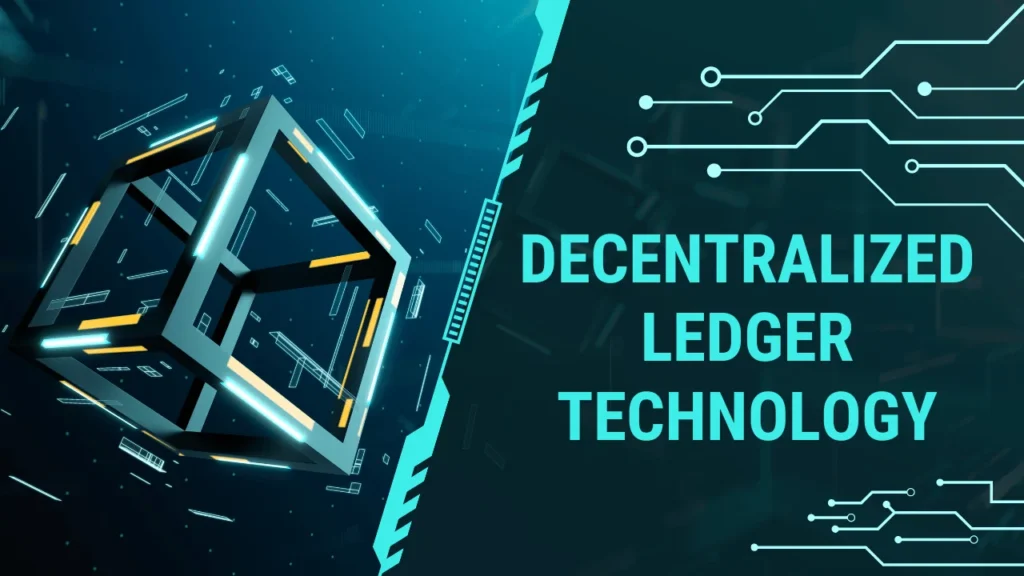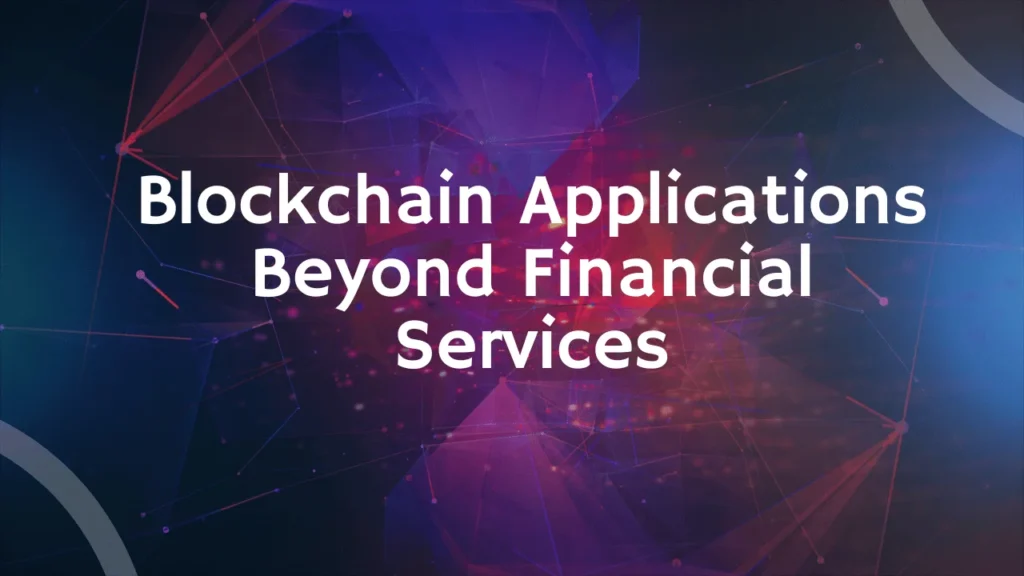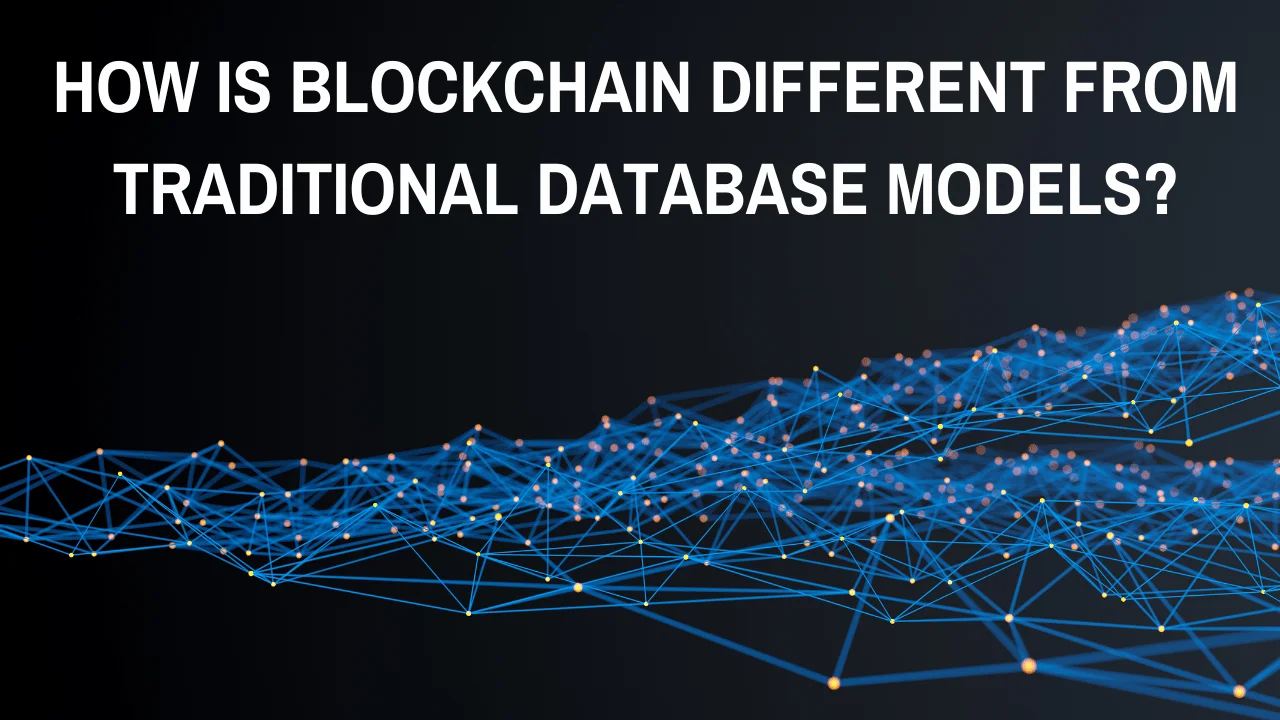As a foundational piece of modern technology, database management systems have grown in sophistication to meet the demands of modern data storage and management in a wide range of industries. Blockchain technology stands out among these innovations as a game-changer because it provides a new framework that breaks away from conventional database models. How is Blockchain Different from Traditional Database Models? To better understand why and for whom these technologies are important, this article compares and contrasts blockchain with conventional databases, going over their respective advantages, disadvantages, features, and uses.
The fundamental concepts that characterize blockchain and conventional databases will form the basis of this investigation. The centralization of database operations is what makes traditional databases so effective; these systems have supported data management for many years. To guarantee data consistency, integrity, and accessibility, this model depends on a centralized authority to manage and control the database. To the contrary, blockchain technology ushers in a distributed ledger system that is both decentralized and autonomous. This dramatic move away from centralization and toward decentralization reimagines data management practices in all kinds of sectors while simultaneously improving security and transparency.
Decentralized Ledger Technology

Foundation of Blockchain
Blockchain differs from centralized database systems due to its foundation, decentralized ledger technology (DLT). Blockchain eliminates the need for a central authority or point of failure by operating on a decentralised network of nodes, as opposed to conventional databases run by a single entity. This decentralization changes the game when it comes to data security and integrity by making the system more resilient to attacks and corruption.
Enhanced Security through Cryptographic Hashing
A pivotal feature of blockchain is its use of cryptographic hashing, which ensures the immutability of data. Using a hash function, each block in the chain is securely linked to the previous block, ensuring that the data in the chain cannot be altered. This system is in sharp contrast to conventional databases, where data corruption and alteration are more common and pose serious threats to data integrity.
PoW vs. PoS
Blockchain employs unique consensus mechanisms, such as Proof of Work (PoW) and Proof of Stake (PoS), to validate transactions and add new blocks to the chain. To guarantee a high degree of security and accurate data, these mechanisms necessitate that all participants in the network concur on the legitimacy of transactions. On the other hand, conventional databases have a single point of failure and bottleneck because they depend on a central authority to validate.
Openness and Accountability
There is an inherent transparency to blockchain technology. Everyone can see and verify every transaction on the blockchain, which increases transparency and responsibility. In conventional databases, where centralized control and limited access to transaction histories and data changes are common, this degree of openness and auditability is unmatched.
Automating Transactions
Blockchain technology brought about a major breakthrough with the introduction of smart contracts. Without the need for middlemen, these code-based contracts automatically execute according to the terms of the agreement, automating transactions in a clear and safe way. One big benefit of blockchain is that it allows for more efficient and secure transactions than traditional databases can. This level of automation and trust in transaction execution is not offered by traditional databases.
Comparative Analysis
Different needs and industries can benefit from blockchain and traditional databases, so it’s important to understand their differences and capabilities. Financial services, supply chain management, and voting systems are just a few examples of the types of applications that could benefit greatly from blockchain technology’s distributed, secure, and transparent architecture. When it comes to scalability, speed, and centralized control, traditional databases really shine. They’re the backbone of a lot of business and consumer apps.
Future Directions
Due to its decentralized nature and the computational requirements of consensus mechanisms, scalability continues to be an issue for blockchain, despite its benefits. Yet, these limitations are being addressed by ongoing innovations like layer-2 solutions and off-chain transactions, which are expanding blockchain technology’s potential applications. Blockchain and traditional databases are both set to grow in the future, playing an increasingly important part in the digital ecosystem and providing specialized answers to the complicated and varied problems faced by contemporary people.
Challenges Faced by Traditional Databases

Security and Efficiency Concerns
A lot of problems, like hacking, data breaches, and illegal access, affect traditional databases’ security. Their centralized design makes them easy prey for cybercriminals, which in turn causes these problems. The database system’s overall performance is affected by the centralized nature, which also causes efficiency bottlenecks during updates or high-volume access.
Data Integrity and Trust Issues
In contexts where data transparency is paramount, users may lose faith in conventional databases due to their dependence on a centralized authority to preserve data integrity. These worries are made even worse by the possibility of data manipulation or insider threats, which shows how centralized systems can’t guarantee complete data integrity.
Scalability Limitations
Conventional databases may be scalable in theory, but in practice, they struggle to keep up with the exponential increase in both data volume and user requests. Database performance and reliability can be negatively impacted by the complexity and possible failure points introduced by sharding and replication, which improve scalability.
Centralized Control and Accessibility
Data sovereignty and accessibility are concerns brought up by the centralized control in traditional databases. There is a threat to data availability and independence because central authorities can limit or remove access. This model stands in stark contrast to blockchain’s decentralized approach, which allows everyone to have access to and control over data.
Blockchain’s Scalability Challenges

Understanding Scalability in Blockchain
Blockchain technology, despite its many advantages, faces significant scalability challenges. Potential bottlenecks may arise as the network expands due to the decentralized nature and consensus mechanisms that guarantee security and trust, but they also limit the transaction throughput.
Off-Chain Transactions and Layer-2 Solutions
The blockchain community has created Layer-2 solutions and off-chain transactions to fix scalability problems. These advancements strive to handle transactions independently of the main blockchain, which alleviates congestion and enables more rapid and efficient transactions while maintaining security.
Role of Smart Contracts in Scalability
While smart contracts do improve efficiency and automate some processes, they also make scalability more difficult. The efficiency of the blockchain in processing high numbers of transactions is hindered by the computational resources needed to execute complicated contracts.
Blockchain Applications Beyond Financial Services

Revolutionizing Supply Chain Management
Due to its exceptional efficiency, traceability, and openness, blockchain technology is revolutionizing the management of supply chains. Blockchain technology improves accountability and decreases fraud by recording all transactions on an immutable ledger. This ensures that all participants in the supply chain have access to up-to-date and accurate data.
Enhancing Voting Systems with Blockchain
Voting systems that use blockchain technology have the potential to be more secure, transparent, and honest. More reliable election procedures will be possible thanks to this technology, which securely records votes on a blockchain, eliminating common problems like manipulation, fraud, and double voting.
Innovations in Data Management Practices
Secure, transparent, and irreversible data storage is made possible by blockchain technology, which is revolutionizing data management practices. In sectors like healthcare, law, and real estate, where the security of sensitive data is of the utmost importance, this presents a new way of thinking about data management and protection.
Must Read: Indian Government Blockchain Initiatives
Frequently Asked Questions
What makes blockchain more secure than traditional databases?
Blockchain technology is more secure and resistant to hacking and unauthorized access than traditional centralized databases because of its decentralized design, consensus mechanisms, and cryptographic hashing capabilities, which make data immutable.
Can blockchain replace traditional databases entirely?
Traditional databases will likely still be around for the foreseeable future, despite blockchain’s many benefits. Rather, they will live side by side, each contributing to specific uses that play to their strengths.
How does blockchain ensure data transparency?
Blockchain technology guarantees the transparency and verifiability of data by recording every transaction on a distributed ledger that is accessible to all participants in the network.
What are the main challenges facing blockchain adoption?
Some of the biggest obstacles to blockchain technology’s wider use are its complexity, lack of clarity in regulations, and its scalability.
Are smart contracts exclusive to blockchain?
Indeed, one distinctive aspect of blockchain technology is smart contracts, which allow for the elimination of middlemen in favor of automated, secure transactions based on predetermined conditions.
Conclusion
Ultimately, it comes down to application and requirement specificity when deciding between blockchain and conventional database models, not quality. Blockchain technology presents a new way of managing data, with its focus on decentralization, security, and transparency. This is especially true for applications that rely on trust and integrity. In contrast, conventional databases are still the backbone of innumerable applications across the globe due to their efficiency, scalability, and centralization of control. How is Blockchain Different from Traditional Database Models? Moving forward, the synergistic benefits of these technologies will alter the face of digital data management by propelling efficiency and innovation across all sectors.

Brandy Stewart, an enchanting wordsmith and seasoned blogger, weaves compelling narratives that transport readers to uncharted territories. Infused with perceptive viewpoints and dynamic storytelling, Doris exhibits a command of language that enthralls both hearts and minds, leaving a lasting mark on the literary panorama.

